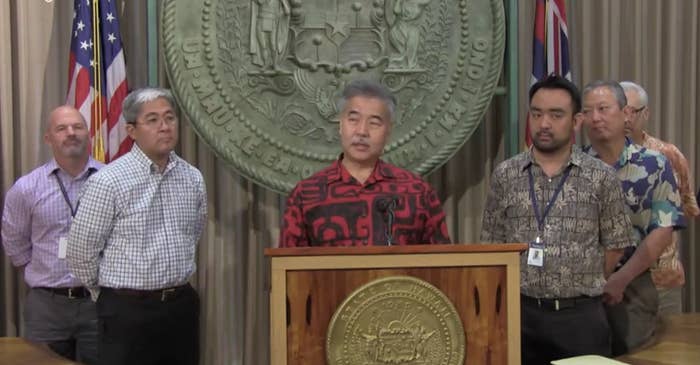
Hawaii’s lush forests and glittering beaches have attracted tourists from all over the world for decades. But the state’s idyllic terrain hides a persistent crisis that is typically associated with the grit of urban environments - homelessness.
Hawaii Gov. David Ige declared a state of emergency on Friday to tackle the state’s growing homeless crisis, which has increased over the last two years in its most populous county of Oahu.
Hawaii currently has about has an estimated 7,620 homeless people, according to a 2015 statewide count. Oahu alone has about 4,900 homeless people, according to a 2015 count by the Department of Human Services.
The numbers appear minimal compared to some of the country’s other homeless populations. California counted about 113,000 homeless people in 2014; Texas about 28,500; and New York about 80,590, according to a 2014 Department of Housing and Urban Development report to Congress.
However, per capita the state touts the highest homeless rate among the 50 states with an estimated 465 people without a home per 100,000, said Scott Morishige, the governor’s Coordinator on Homelessness.
"We are making sure that we have options for those who are homeless to move into an emergency shelter,” Ige said during a press conference Friday. “And the biggest deficit in the system is shelter space for families."
The emergency proclamation would allow the state to fund temporary shelter for homeless families, extend contracts with homeless service providers and programs that promote immediate housing for the homeless.
The state plans to use $1.3 million toward those goals that it says will serve 1,000 more homeless people between now and July 31, 2016.
The funds will also help build a new temporary transitional housing facility for homeless families, which would house about 15 families at a time, Morishige said.
The sites for the temporary housing units are not set, but the state is considering Kakaako, Liliha and a site near Sand Island.
The governor’s announcement came just two days after the government cleared a homeless encampment in Kakaako, which had Rep. Tom Brower calling for housing options for those who were displaced.
Gov. Ige said on Friday that the Kakaako encampment clearing may be a model to consider for the rest of the state. More than half of the 300 estimated residents in the encampment were relocated to shelters or temporary housing, including 25 families, he said.
The ACLU filed a lawsuit in September against the city of Honolulu claiming some of the encampment residents had property confiscated and destroyed in the sweeps, but a federal judge denied the motion.
The city said in a statement that it believes it "will survive the current challenge" to its stored property ordinance.
